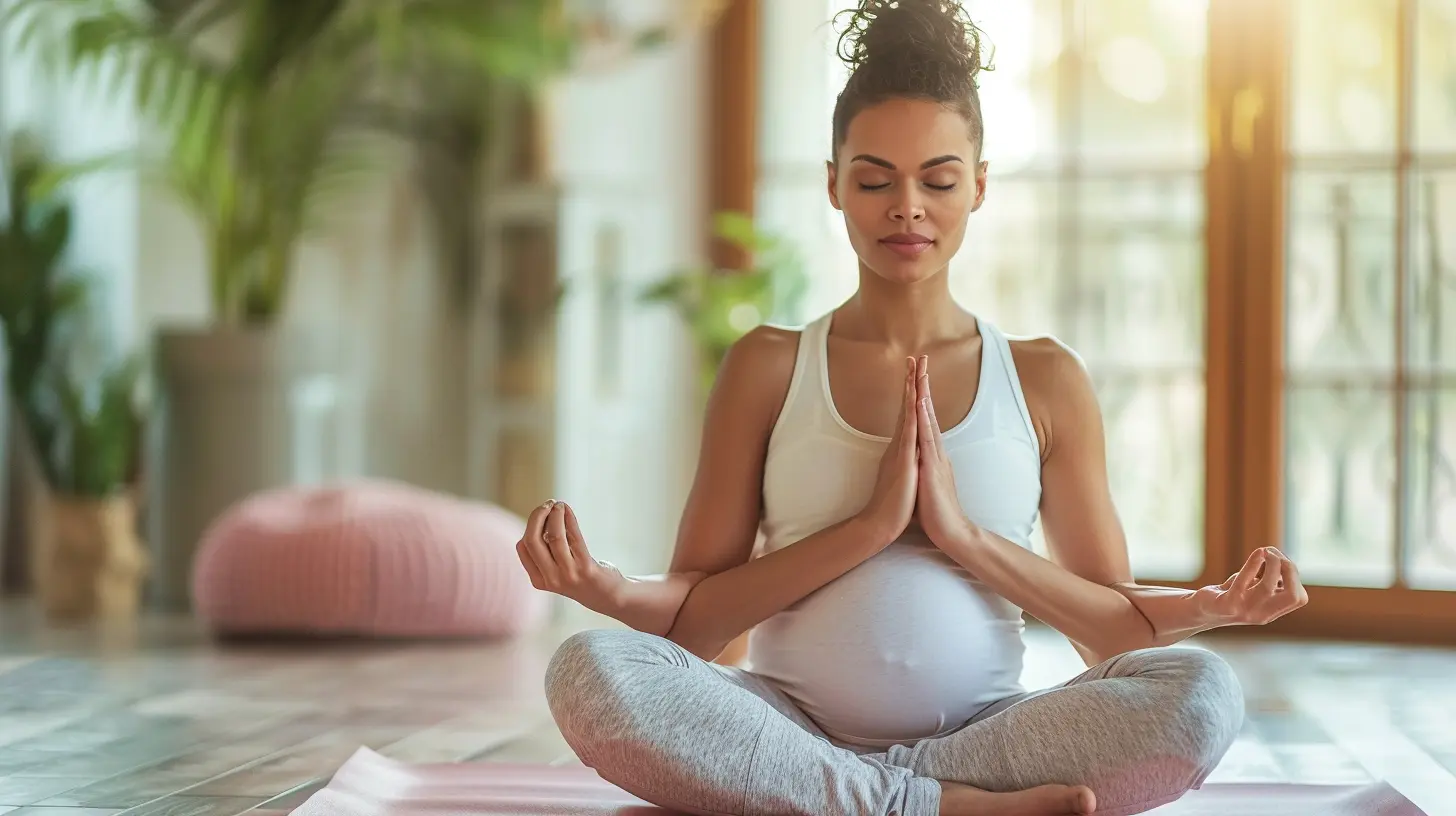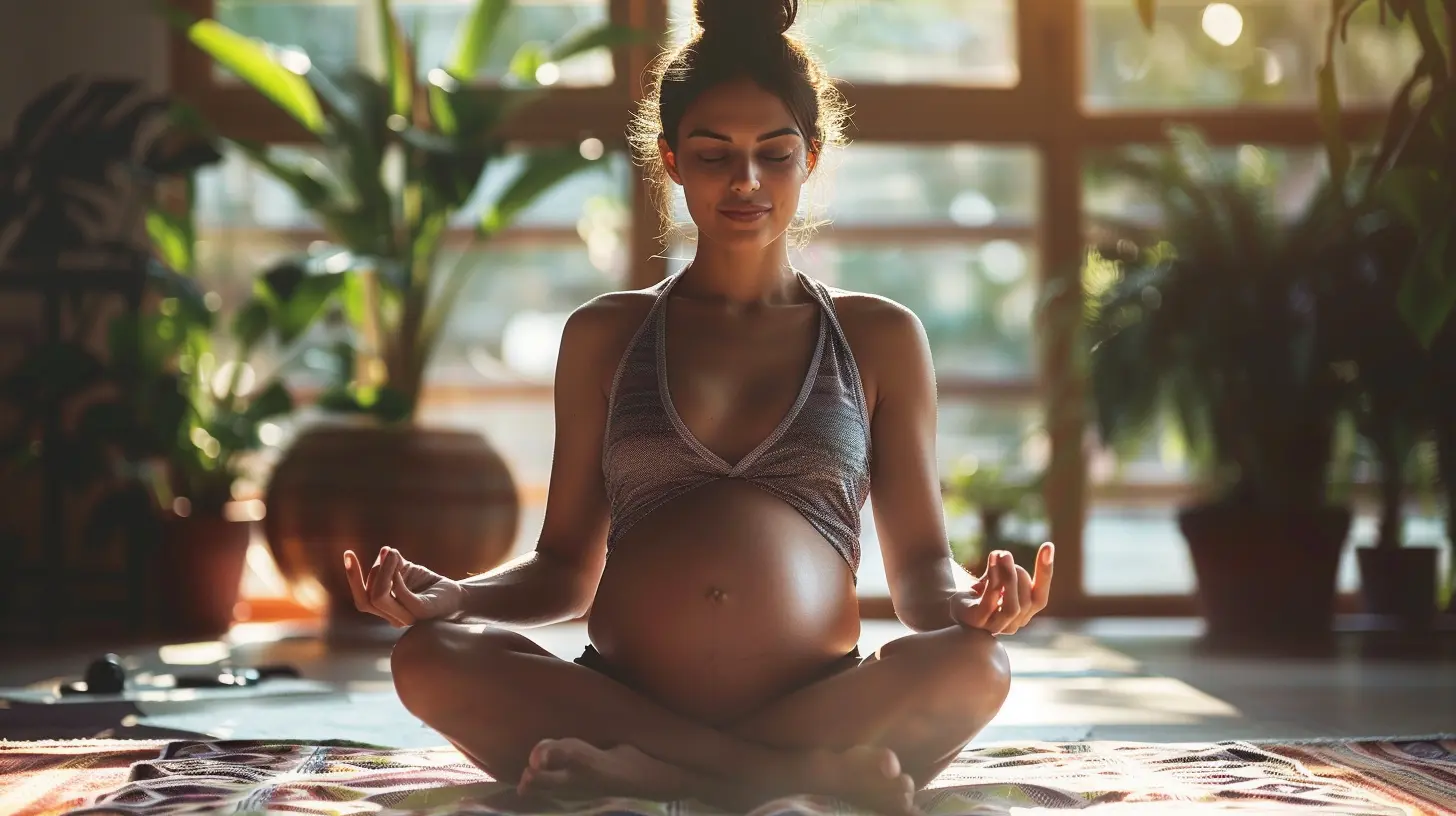Postnatal Yoga for Restoring Balance and Calm
2 July 2025
Bringing a baby into the world is one of life's most beautiful experiences, but let’s be real—it also takes a serious toll on a new mom’s body and mind. Sleepless nights, hormonal shifts, and the overwhelming responsibility of caring for a newborn can leave you feeling exhausted and out of sync.
This is where postnatal yoga steps in. It’s not just about gentle stretches—it’s a lifeline for moms looking to regain strength, calm their minds, and reconnect with their bodies. In this guide, we’ll dive into how postnatal yoga can help you restore balance, promote healing, and bring back a sense of calm amidst the chaos of new motherhood. 
Why Postnatal Yoga?
Postnatal yoga is specifically designed to help new moms recover after childbirth. It focuses on strengthening the core, easing lower back pain, improving posture, and relieving stress. But the real magic? It gives you a chance to slow down, breathe, and take care of yourself—something that often gets pushed to the back burner when you're busy with a newborn.Still wondering if it’s worth the effort? Let’s break it down.
1. Helps the Body Heal After Childbirth
Pregnancy is tough on the body. Your abdominal muscles stretch, your spine takes on extra weight, and your pelvic floor undergoes significant strain. After childbirth, your body needs gentle support to regain strength without overdoing it.Postnatal yoga includes poses that gradually re-engage your core, strengthen your lower back, and support pelvic floor recovery. Instead of jumping straight into intense workouts, yoga allows your body to ease back into movement in a safe and controlled way.
2. Relieves Stress and Anxiety
Let’s talk about the emotional rollercoaster that comes with being a new mom. The mix of hormonal changes, sleep deprivation, and new responsibilities can lead to stress, anxiety, and sometimes even postpartum depression.Postnatal yoga encourages mindful breathing and relaxation techniques that help lower cortisol (the stress hormone) and promote a sense of calm. When you focus on deep breathing and gentle movements, your nervous system shifts into a state of relaxation—helping you feel more balanced and in control.
3. Improves Posture and Strength
Carrying a baby all day, breastfeeding, and constantly looking down at your little one can do a number on your posture. Many new moms find themselves dealing with backaches, neck tension, and tight shoulders.Yoga helps counteract this by strengthening the back muscles, opening up the chest, and encouraging proper alignment. Simple stretches and poses can work wonders in relieving tension and bringing awareness to how you hold yourself throughout the day.
4. Boosts Energy Levels
Feeling constantly drained? You’re not alone. Sleep deprivation and round-the-clock baby care can leave you feeling like a zombie.Even a short postnatal yoga session can boost circulation, increase oxygen flow, and leave you feeling more energized. The best part? You don’t need hours—just 10-15 minutes can make a noticeable difference in your energy levels. 
When to Start Postnatal Yoga
So, when’s the right time to roll out your mat? That depends on the type of birth you had and how your recovery is going.For most moms, it’s safe to start gentle yoga about 6 weeks postpartum (after your doctor gives the green light). If you had a C-section or a complicated delivery, you might need to wait a bit longer—closer to 8-10 weeks.
No matter when you start, listen to your body. If something feels uncomfortable, take a break. Healing is a process, and there’s no rush! 
Best Postnatal Yoga Poses
Not sure where to begin? Here are some beginner-friendly poses that can help with recovery, strength, and relaxation.1. Child’s Pose (Balasana)
This simple yet powerful pose stretches the lower back, relieves tension in the shoulders, and encourages deep breathing.How to do it:
- Sit on your heels with your knees slightly apart.
- Extend your arms forward and lower your forehead to the mat.
- Take deep, slow breaths as you relax into the pose.
Bonus: This is a great pose to sneak in when your little one is napping!
2. Cat-Cow Stretch
Great for loosening up the spine and improving circulation. It’s especially helpful for new moms who experience back pain from nursing or carrying their baby.How to do it:
- Start on hands and knees in a tabletop position.
- Inhale, arch your back, and look up (Cow pose).
- Exhale, round your back, and tuck your chin (Cat pose).
- Repeat slowly for 5-10 breaths.
3. Bridge Pose (Setu Bandhasana)
Perfect for strengthening the pelvic floor and lower back. It also helps open up the hips, which can get tight from sitting and feeding the baby.How to do it:
- Lie on your back with your knees bent and feet hip-width apart.
- Press into your feet and lift your hips toward the ceiling.
- Engage your glutes and hold for a few breaths before lowering.
4. Reclined Bound Angle Pose (Supta Baddha Konasana)
This deeply relaxing pose helps open the hips and promotes a sense of calm.How to do it:
- Lie on your back and bring the soles of your feet together, letting your knees fall open.
- Rest your arms by your sides and take slow, deep breaths.
💡 Tip: Place pillows under your knees for extra support!
5. Seated Forward Bend (Paschimottanasana)
Gently stretches the lower back and hamstrings while promoting relaxation.How to do it:
- Sit with your legs extended straight in front of you.
- Inhale and lengthen your spine.
- Exhale and fold forward, reaching for your feet (or shins if you’re less flexible).
- Hold for 5-10 deep breaths. 
Tips for Practicing Postnatal Yoga
Starting your postnatal yoga journey? Here are a few tips to keep in mind:✔️ Listen to your body: Avoid any poses that feel too intense or uncomfortable. Your body is still healing, so take it slow!
✔️ Breathe deeply: Focus on slow, mindful breathing to enhance relaxation and reduce stress.
✔️ Use props if needed: Blocks, pillows, and blankets can offer extra support and comfort.
✔️ Stay hydrated: If you're breastfeeding, hydration is even more crucial. Keep a bottle of water nearby.
✔️ Be patient with yourself: Recovery isn’t a race. Some days will be better than others, and that’s okay!
The Emotional Benefits of Postnatal Yoga
Beyond physical recovery, postnatal yoga offers huge emotional benefits. Motherhood can feel overwhelming, and yoga provides a space where you can reconnect with yourself, even if it's just for a few minutes.Many new moms find that practicing yoga helps:
✅ Reduce feelings of anxiety and overwhelm
✅ Improve mood and boost overall emotional well-being
✅ Enhance patience and mindfulness
✅ Strengthen the bond between mom and baby (yes, you can include your little one in your yoga practice!)
Let’s face it—taking care of yourself as a mom isn't always easy. But with postnatal yoga, you’re not just doing your body a favor; you’re creating a sanctuary of calm amidst the beautiful chaos of motherhood.
Final Thoughts
Postnatal yoga is more than just a workout—it’s a therapeutic practice that helps new moms heal, regain strength, and find moments of peace in their busy lives. Whether you're dealing with postpartum fatigue, stress, or physical discomfort, yoga offers a gentle, effective way to restore balance and calm.So, roll out your mat, take a deep breath, and give yourself permission to slow down. Your body—and mind—will thank you!
all images in this post were generated using AI tools
Category:
Postpartum HealthAuthor:

Holly Ellison
Discussion
rate this article
1 comments
Gabrielle Horne
Essential for new moms—restores balance and promotes relaxation!
July 17, 2025 at 5:00 AM

Holly Ellison
Thank you! I'm glad you found it essential for new moms; balance and relaxation are so important during this time.


